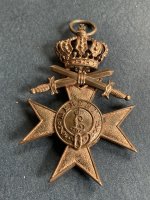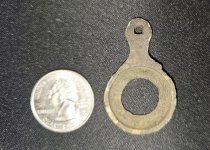LawrencetheMDer
Hero Member
- Feb 22, 2014
- 984
- 2,397
- 🏆 Honorable Mentions:
- 2
- Detector(s) used
-
Minelab Manticore, Minelab CTX3030 w 11" and 17" DD coils,
Minelab Excalibur II w 10" coil, Equinox 800 (4) w 11" and 15" coils,
Troy Shadow x2 w 7" coil, Pointers; Garrett Carrot, Pro Find 35,
- Primary Interest:
- Beach & Shallow Water Hunting
In an ideal World, one would expect the type of coins found with a metal detector to fairly match US Mint production records in terms of the ratio of coins produced. For example, if the Mint produces 25% of its coins (1, 5, 10, 25c) as quarters we would expect about 25% of the coins found metal detecting to be quarters. This assumes that coins are loss independent of denomination. Some caveats, however, may be size (Quarters are bigger and easier to detect than dimes, particularly at deeper depths) and that cents are sometimes thrown away. Also one would think something big like a quarter would be harder to lose than a cent. Given these and many other apparent limitations, with motivation from Big Scoop who provided the US mint link to coin production figures, I decided to compare my coin finds metal detecting the beaches of Florida with Mint production figures. I combined 2016 and 2017 (to date) coin finds by my Excal and they totaled 2,882 coins. The below Table shows Mint production figures (2016 only, but appear representative across years) in terms of percentages of each denomination with my coin finds for 2016 and 2017.
Percentage
Coin 0.01 0.05 0.1 0.25
Mint 55 9.5 17.9 17.6
Find 49.2 10.9 22.1 17.9
Overall, I was surprised at how closely my Finds match the Mint production figures. I seem to be a little low on cents (49.2 vs 55%) and a little higher on nickels (10.9 vs 9.5%) and higher on dimes (22.1 vs 17.9%), which is fine with me. Quarters appear right-on (17.9 vs 17.6%) and suggests they're loss is equal to the proportion produced and in circulation.
When I compiled these figures, I started to wonder if the metal detector used would influence the proportion of coins discovered? I use a multi-frequency Excal; would a single VLF machine produce different ratios? These types of data may shed light on detectors that miss, for example, nickels compared to other denominations.
Would love to hear from other Detectorists, who have different machines, how their ratios compare to mine and the Mint figures.
Percentage
Coin 0.01 0.05 0.1 0.25
Mint 55 9.5 17.9 17.6
Find 49.2 10.9 22.1 17.9
Overall, I was surprised at how closely my Finds match the Mint production figures. I seem to be a little low on cents (49.2 vs 55%) and a little higher on nickels (10.9 vs 9.5%) and higher on dimes (22.1 vs 17.9%), which is fine with me. Quarters appear right-on (17.9 vs 17.6%) and suggests they're loss is equal to the proportion produced and in circulation.
When I compiled these figures, I started to wonder if the metal detector used would influence the proportion of coins discovered? I use a multi-frequency Excal; would a single VLF machine produce different ratios? These types of data may shed light on detectors that miss, for example, nickels compared to other denominations.
Would love to hear from other Detectorists, who have different machines, how their ratios compare to mine and the Mint figures.
Amazon Forum Fav 👍
Upvote
0


 In terms of USA, sounds low, but would like a source. Any info on number of gold rings lost/yr?
In terms of USA, sounds low, but would like a source. Any info on number of gold rings lost/yr?


